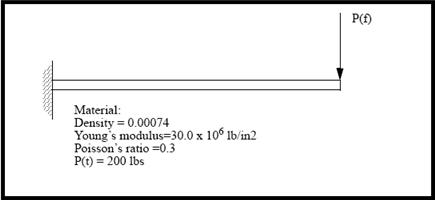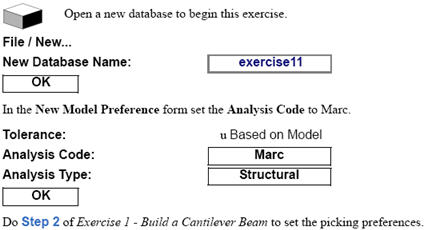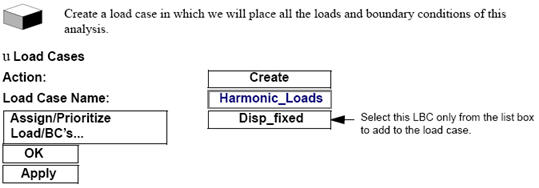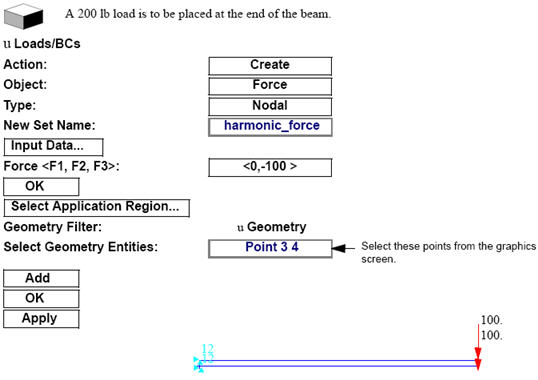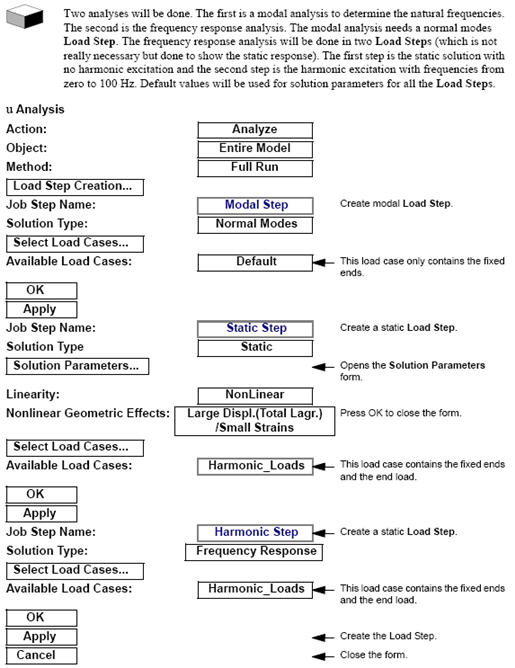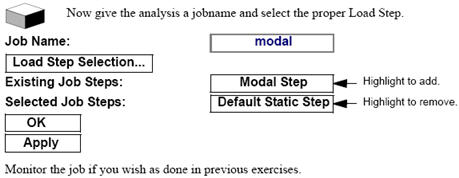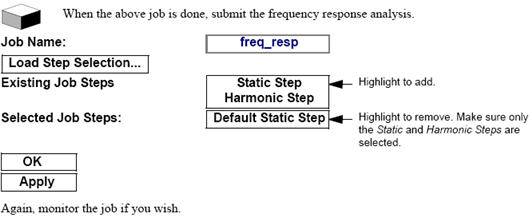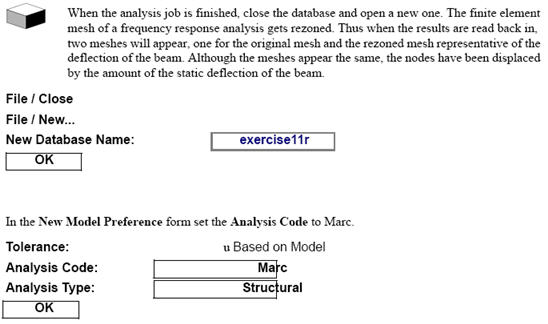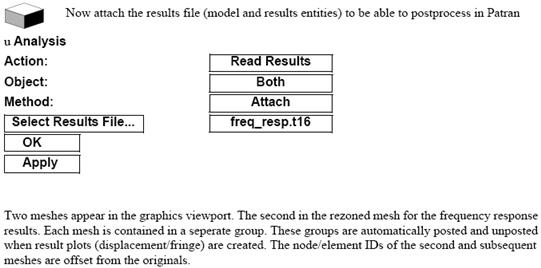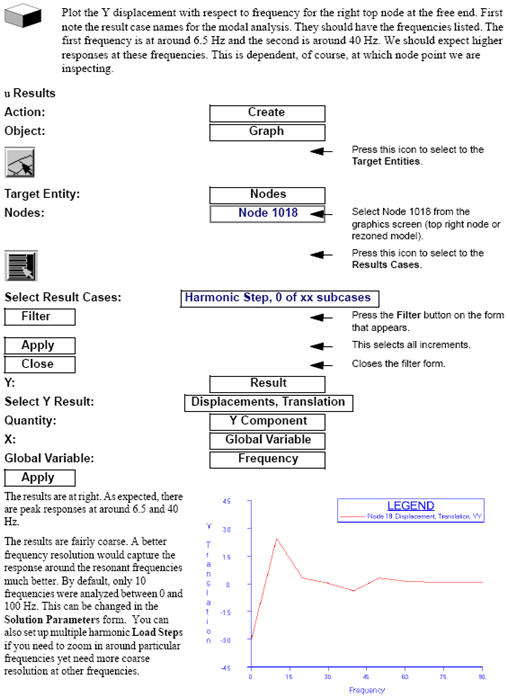XXXXXXXXXXXXXXXXXXXXXXXXXXXXXXXXXXXXXXXXXXXXXXXXXXXXXXXXXXXXXXXXXXXXXXXXXXXXXXXXXXXXXXXXXXXXXXXXXXXXXXXXXXXXXXXXXXXXXXXXXXXXXXXXXXXXXXXXXXXXXXXXXXXXXXXX''"> Exercise 11 - Frequency Response Analysis
In this exercise, you will excite the cantilever beam with a load at the end of the beam at various frequencies (known also as a harmonic analysis). This characterizes its vibrational qualities. First a modal analysis will be done to determine the natural frequencies of the cantilever beam which will tell us approximately where we can expect to see large responses due to excitation at resonant frequencies. The results are also compared to the static solution at zero hertz.
Step 1: Do Exercise 1 - Build a Cantilever Beam
Step 2: Open a New Database
Step 3: Import the Old Database
Step 4: Post Only the Beam.
Step 5: Create a New Load Case.
Step 6: Create the Harmonic Load.
Step 7: Set Up the Load Steps for Analysis.
Step 8: Submit the Model Analysis
Step 9: Submit the Frequency Response Analysis
Step 10: Close the Database and Open a New Empty Database.
Note: | It is recommended that frequency response or adaptive meshing analysis results be imported into an empty database for postprocessing. This is not absolutely necessary but makes for a cleaner postprocessing database and avoids confusion with the original model because multiple meshes are imported into the database in order to process results on the adaptive or rezoned mesh(es). |
Step 11: Read the Results.
Step 12: Plot the Tip Deflection with Frequency
Step 13: Additional Challenge
Step 14: Closing/Quitting Patran
